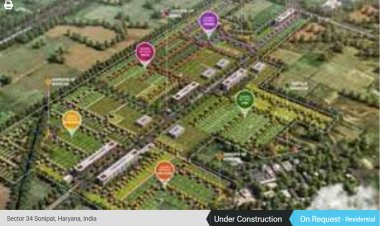Modern Beekeeping Methods: The Exclusive Role of IoT in Saving Beekeeping
Discover how IoT revolutionizes modern beekeeping methods. Explore exclusive beehive monitoring systems and critical techniques for successful beekeeping to combat honey bee decline.
Share this Post to earn Money ( Upto ₹100 per 1000 Views )

Introduction
Beekeeping, one of the oldest agricultural practices, is facing a modern crisis — honey bee declination due to climate change, habitat loss, and diseases. In response, beekeepers are adopting advanced beehive monitoring systems and integrating IoT in beekeeping to improve efficiency and safeguard bee health. This blog explores modern beekeeping methods, the exclusive role of IoT in saving beekeeping, and critical techniques for successful beekeeping in today’s data-driven world.
The Evolution of Beekeeping
Traditional beekeeping involves routine inspection, manual observation, and guesswork. However, modern-day challenges such as colony collapse disorder, pesticide exposure, and weather unpredictability demand more precise, real-time solutions. Enter IoT.
What is a Beehive Monitoring System?
A Beehive Monitoring System is a smart, sensor-based solution designed to track the internal and external conditions of a beehive. These systems typically monitor:
-
Temperature and humidity inside the hive
-
Hive weight and productivity
-
Bee activity and movement patterns
-
Sound frequencies (to detect queenlessness or swarming behavior)
-
Intrusion or theft alerts
-
Weather conditions affecting bee foraging
By providing real-time data, these systems help beekeepers make informed decisions that enhance hive management and honey production.
The Role of IoT in Saving Beekeeping
The exclusive role of IoT in saving beekeeping lies in its ability to turn passive observation into active monitoring. Let’s break down how IoT technology supports beekeepers:
1. Real-Time Monitoring
Sensors embedded in hives collect and transmit data 24/7. Beekeepers can access this data remotely via smartphones or computers, reducing the need for constant physical checks.
2. Predictive Analysis
Using AI-powered analytics, IoT systems can predict possible threats like swarming, disease outbreaks, or environmental stressors, allowing preemptive action.
3. Data-Driven Decisions
IoT helps in optimizing hive placement, adjusting feeding schedules, and managing breeding cycles — all based on empirical data rather than assumptions.
4. Enhancing Productivity
By ensuring optimal hive conditions, beekeepers can significantly boost honey yield, reduce bee mortality, and improve colony health.
Critical Techniques for Successful Beekeeping Using IoT
To get the most out of a beehive monitoring system, beekeepers should integrate it into broader modern beekeeping methods. Key techniques include:
1. Smart Hive Placement
IoT-enabled weather data can help identify optimal locations for hives, ensuring bees get the right mix of sunlight, shade, and wind protection.
2. Proactive Pest Control
Monitoring hive acoustics and humidity levels allows early detection of pests like Varroa mites, wax moths, or hive beetles.
3. Seasonal Planning
IoT data enables effective planning of seasonal activities like honey harvesting, artificial feeding, or queen rearing based on precise hive performance.
4. Remote Hive Access
Especially useful for commercial beekeepers managing multiple apiaries, remote access helps streamline operations and reduce labor costs.
Benefits of IoT in Beekeeping
Here are some exclusive advantages of incorporating IoT into your beekeeping practices:
-
Early Detection of Issues: Reduce colony loss with immediate alerts for anomalies.
-
Efficient Resource Use: Minimize manual labor and optimize hive management.
-
Sustainable Beekeeping: Reduce environmental impact through smart planning.
-
Scalability: Easily manage hundreds of hives across large areas.
-
Data Logging for Research: Create historical datasets to support research or government compliance.
Challenges in Implementing IoT for Beekeeping
Despite its benefits, there are some obstacles to consider:
-
Initial Setup Costs: High-end systems can be expensive for small-scale beekeepers.
-
Technical Knowledge: Users must understand how to install, interpret, and act on IoT data.
-
Connectivity Issues: Rural apiaries may face poor internet or cellular connectivity.
Solutions like solar-powered sensors and offline data logging are helping overcome these limitations.
Conclusion
The integration of IoT into beekeeping represents a new frontier for sustainable, efficient, and scalable hive management. Through the use of beehive monitoring systems, beekeepers are not only boosting productivity but also playing a vital role in saving bee populations.
With the exclusive role of IoT in saving beekeeping and the adoption of critical techniques for successful beekeeping, the future of apiculture looks brighter and more promising than ever.














